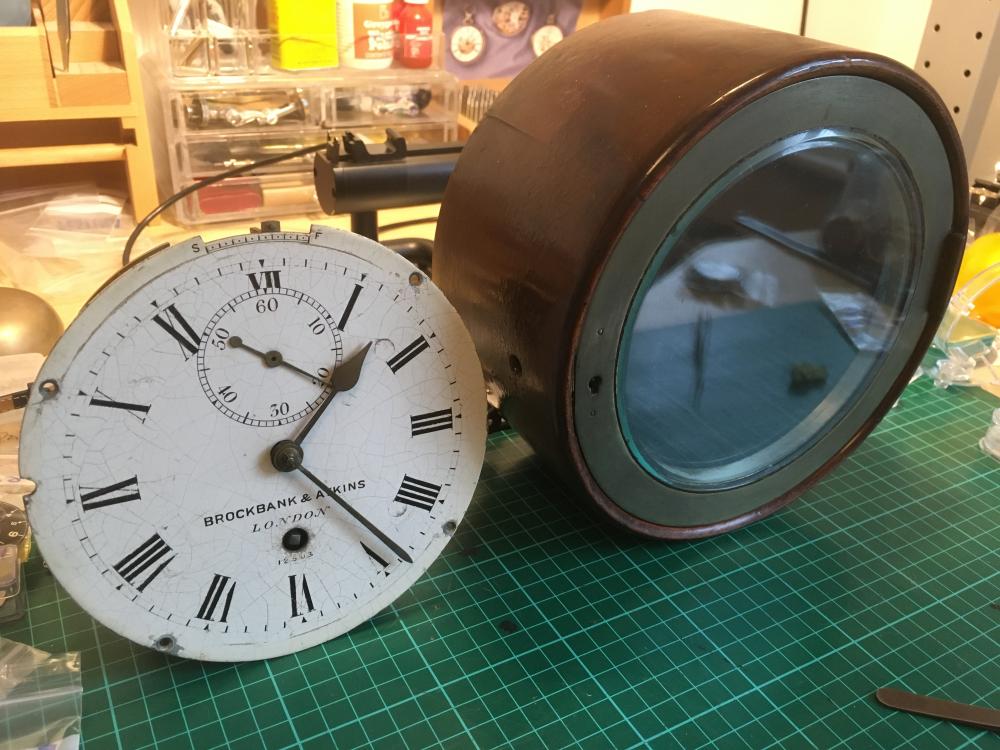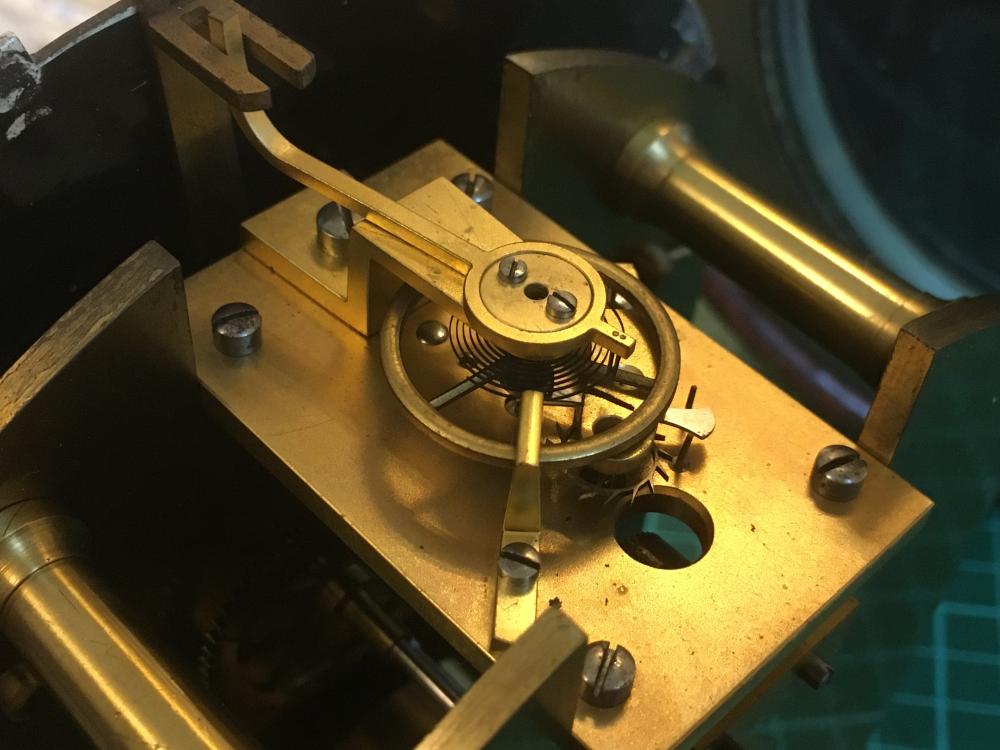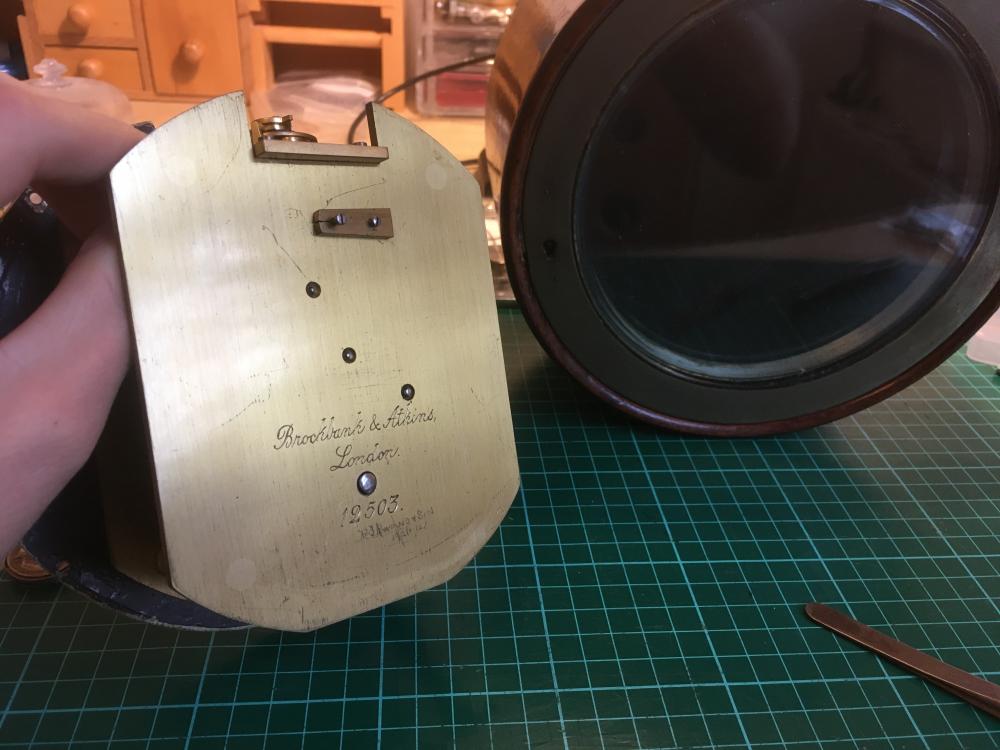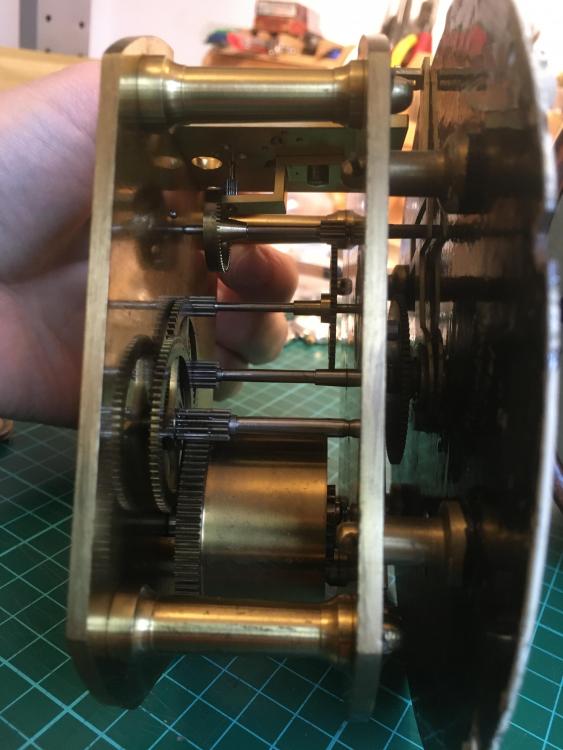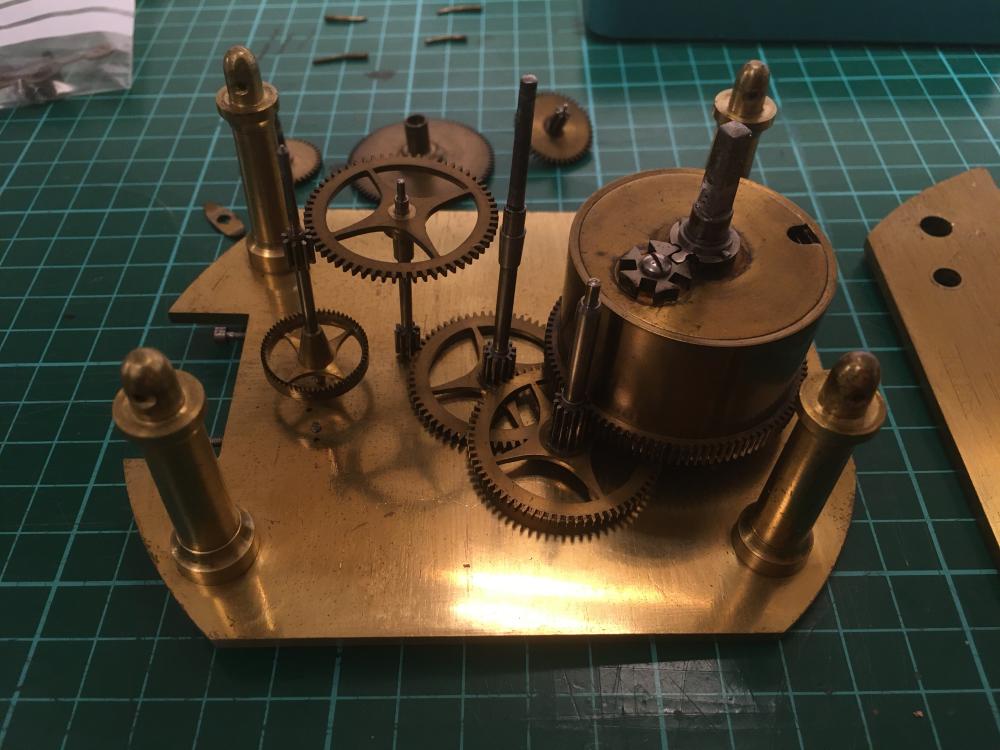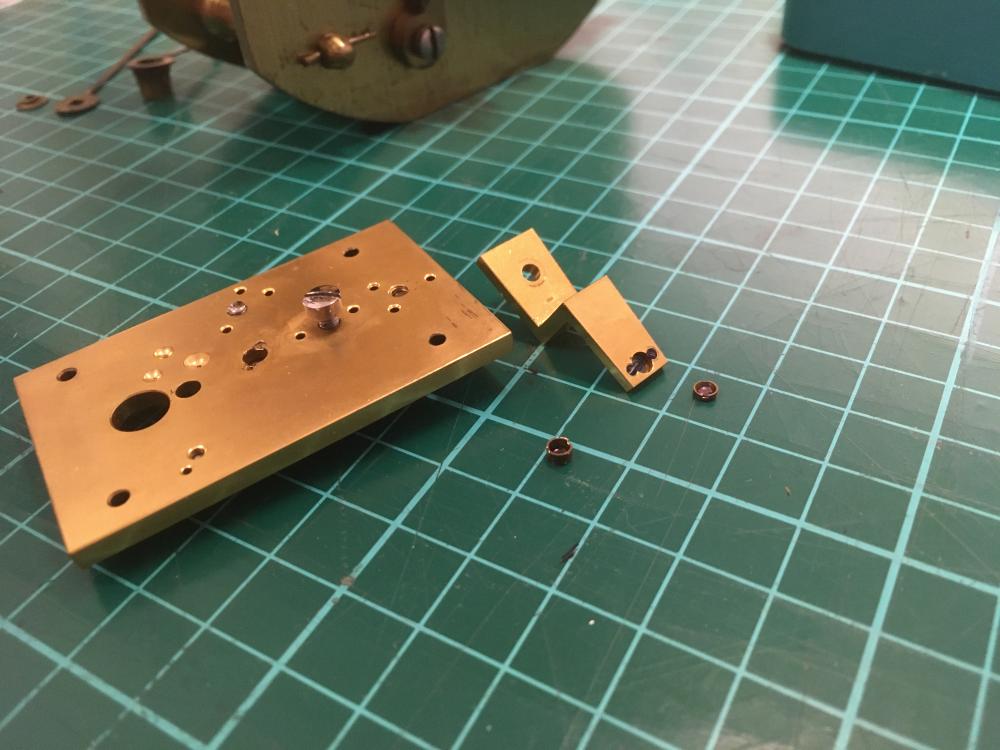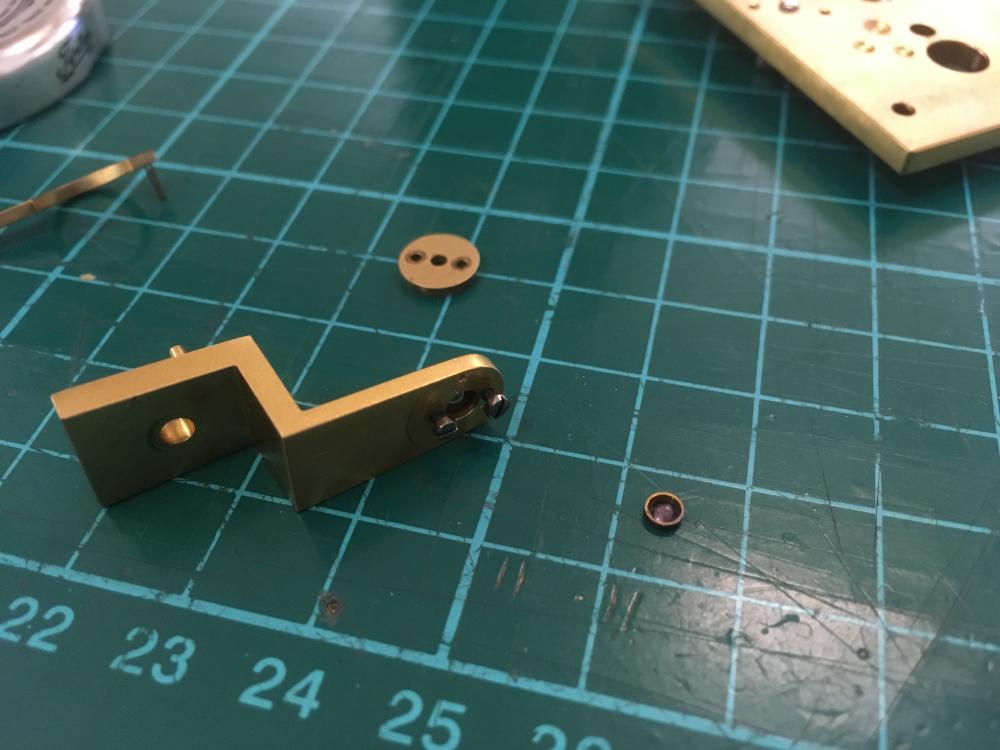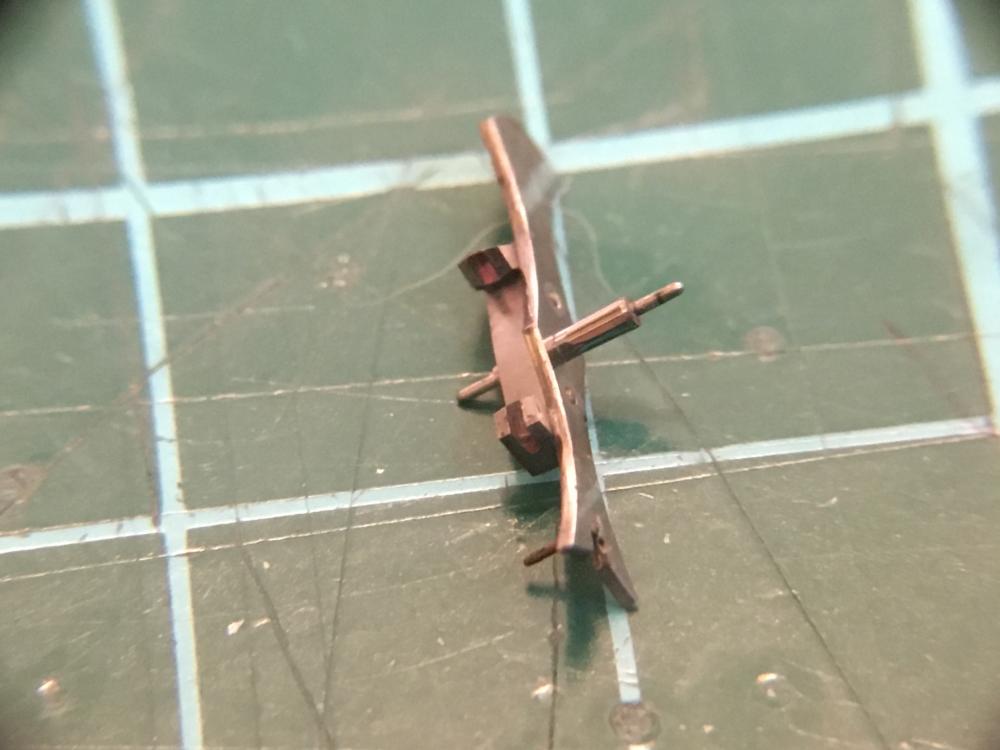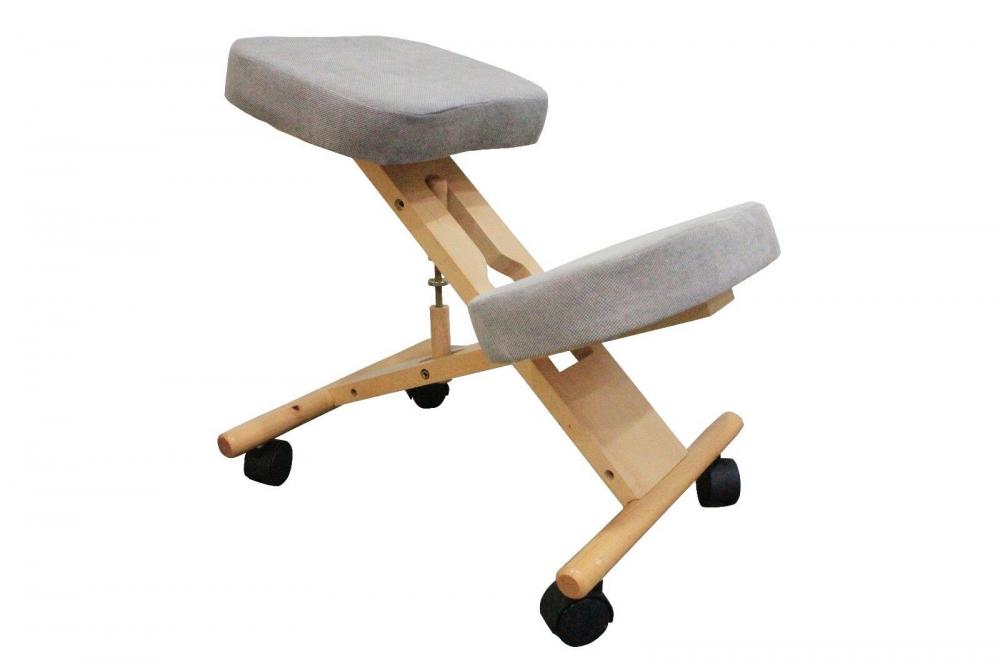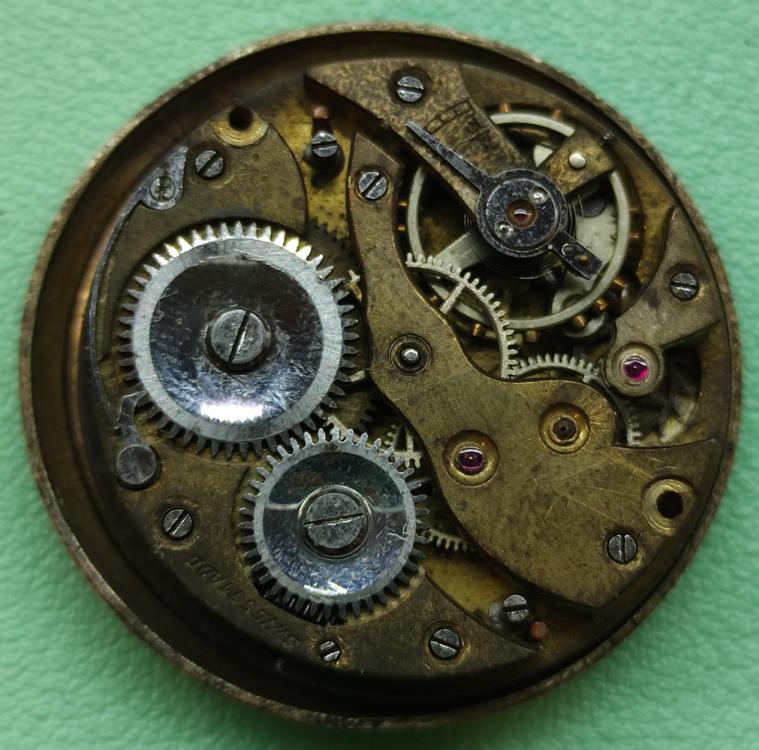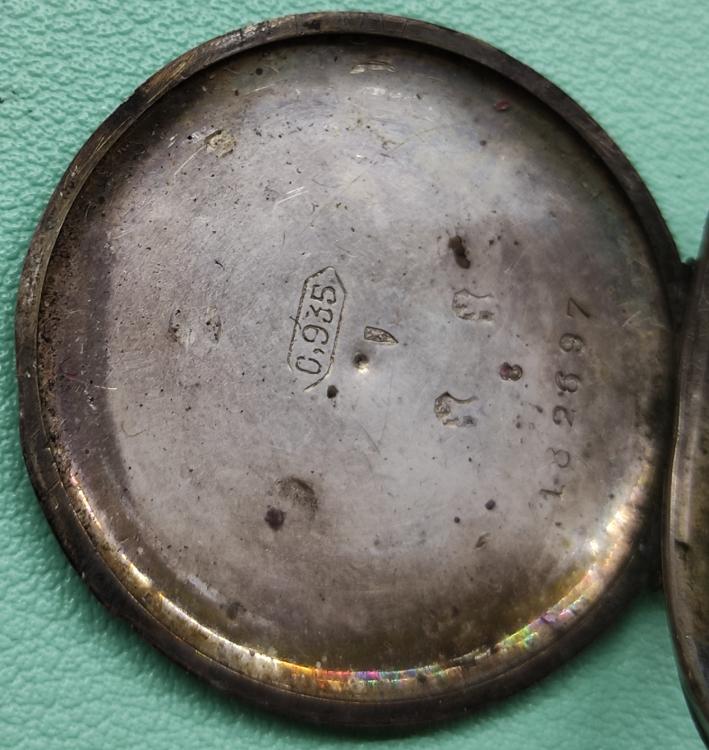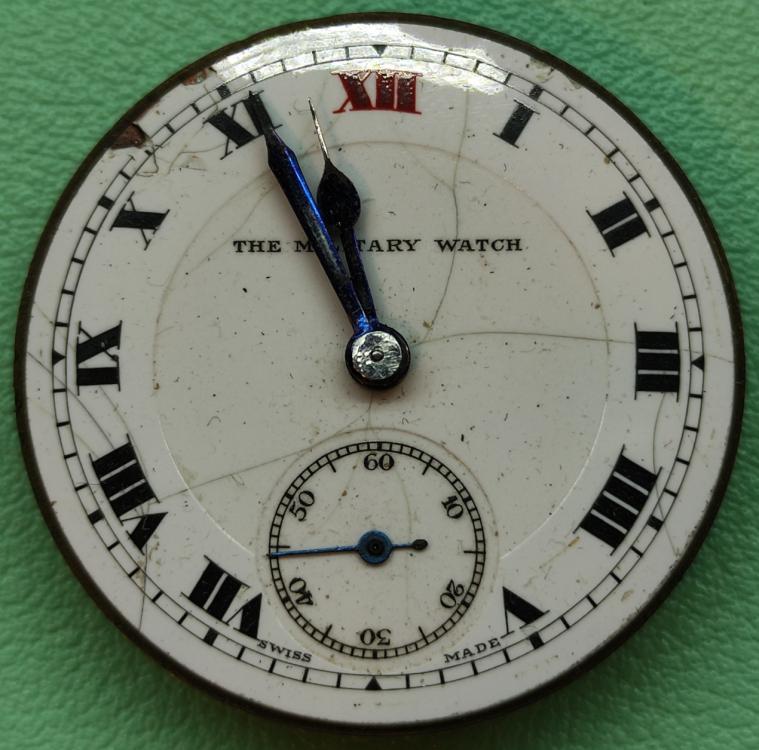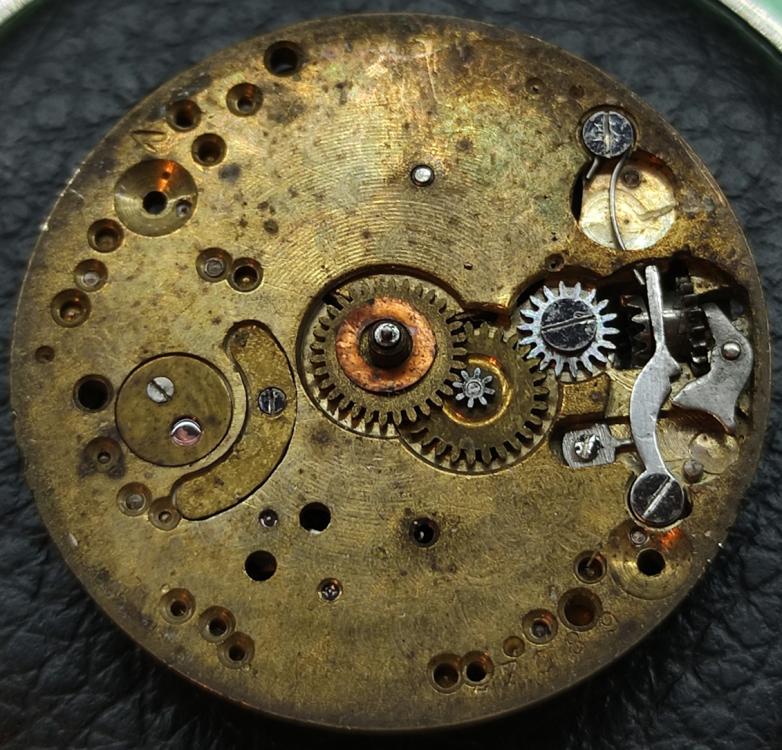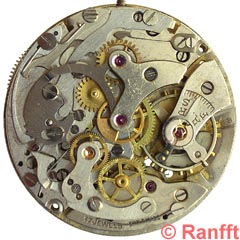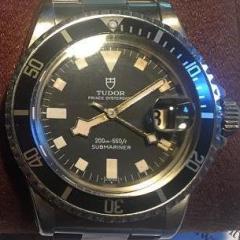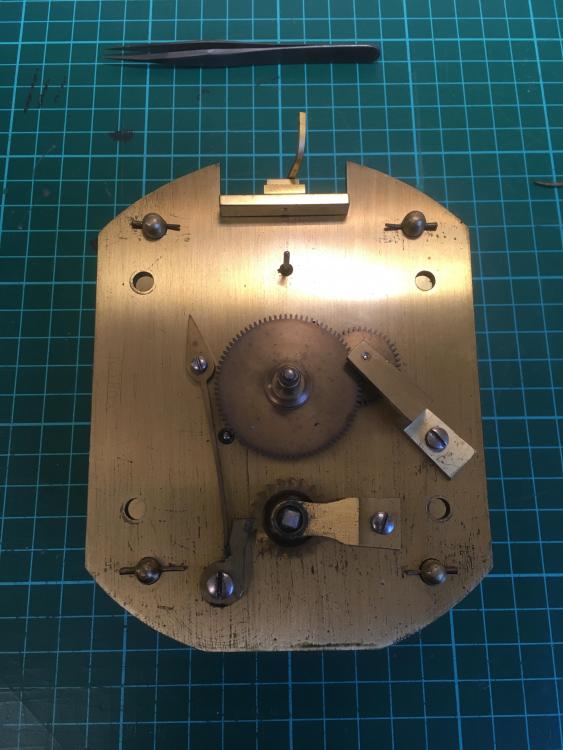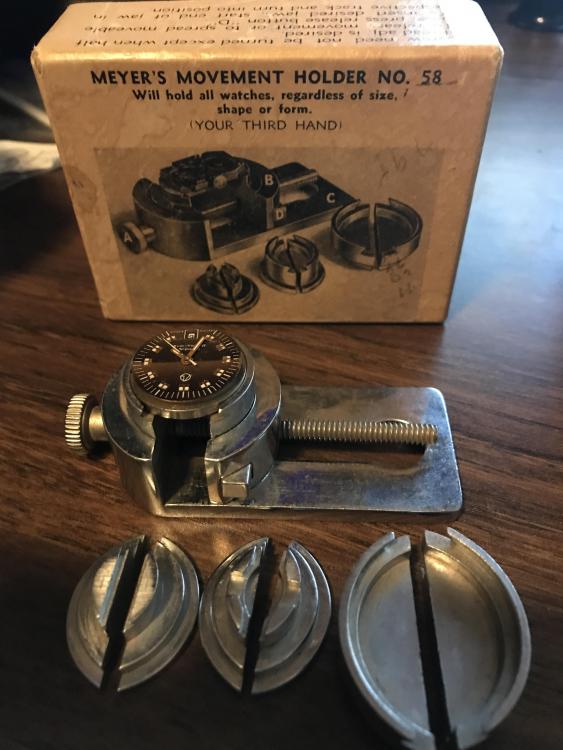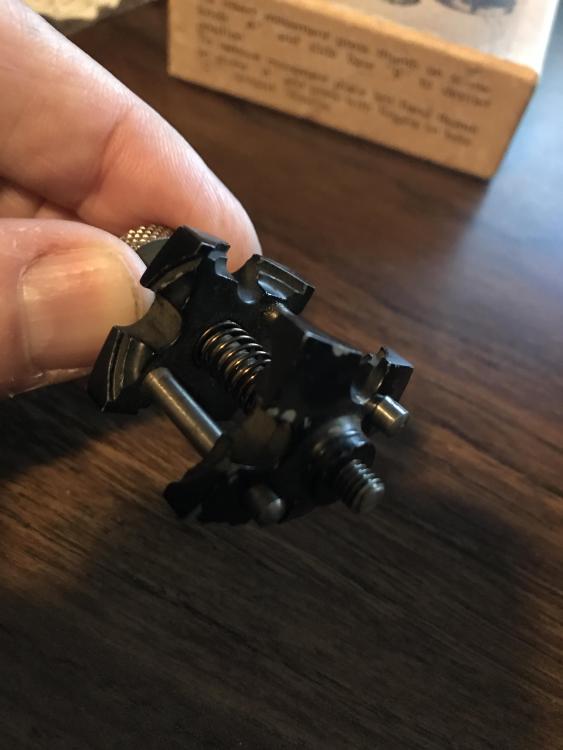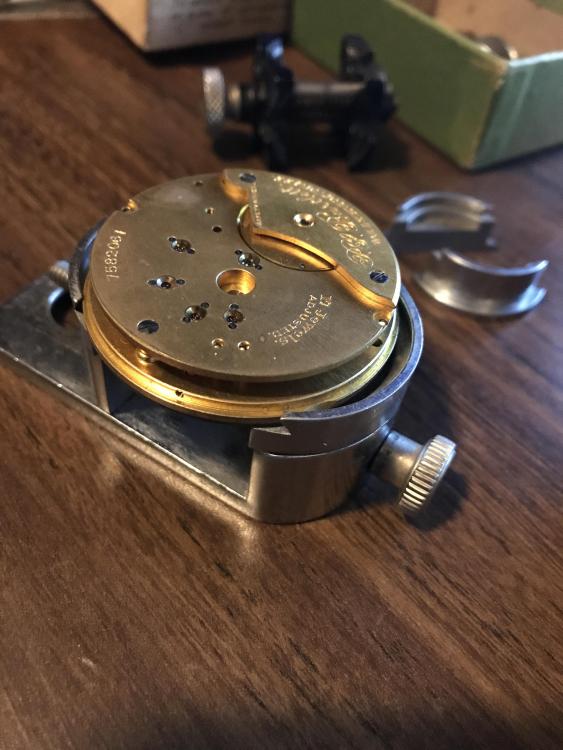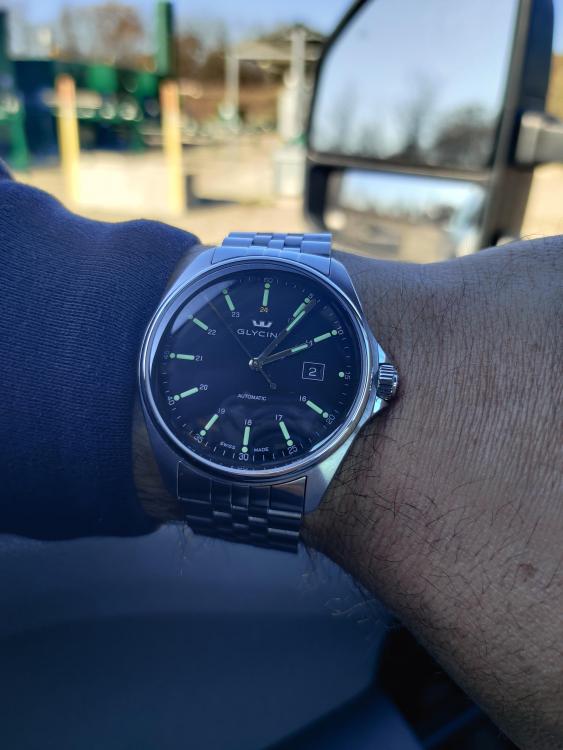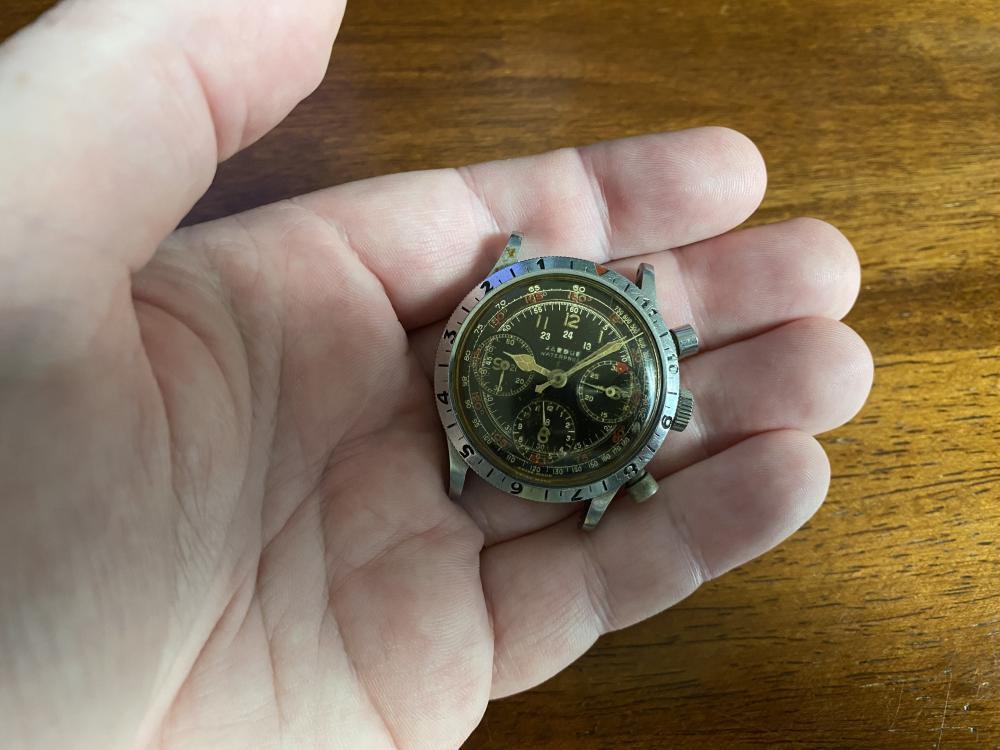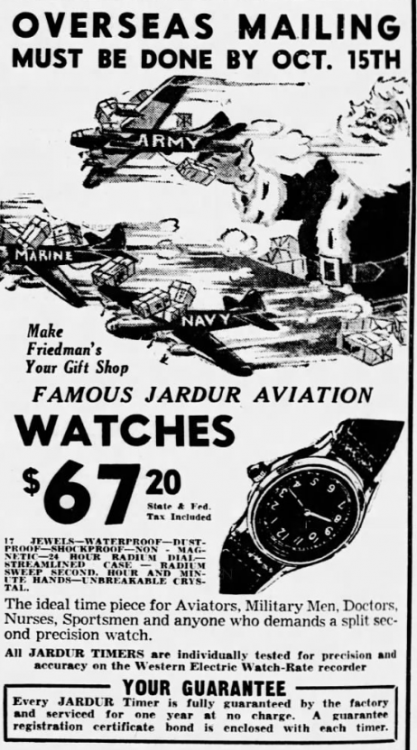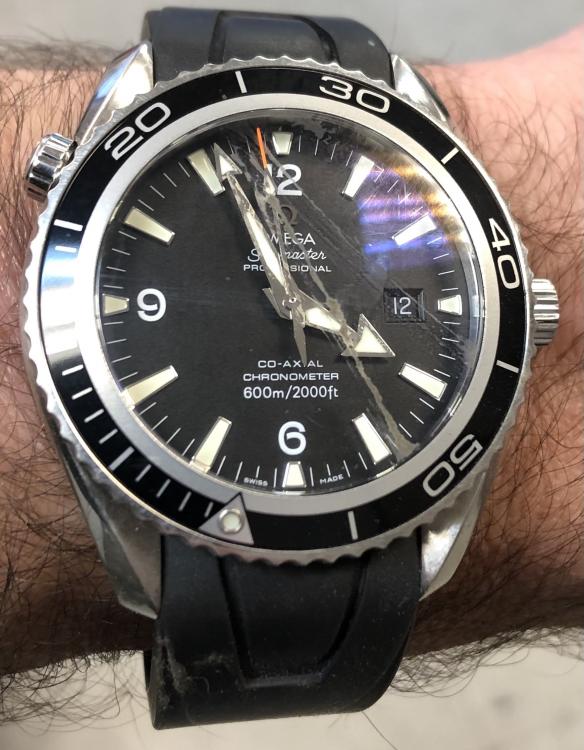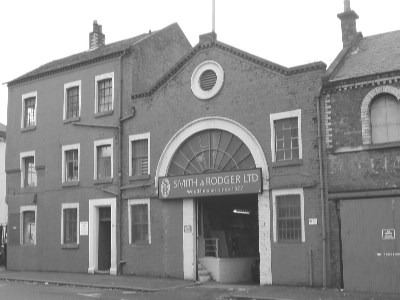Leaderboard
Popular Content
Showing content with the highest reputation on 11/25/20 in all areas
-
I think I would be inclined to start a bit further around the outer coil, perhaps at about 5 o'clock in your pics, and gently coax the outer coil outwards as you spiral out in a clockwise direction. As it is that outer coil is deviating inwards from about the 5 o'clock position until it is touching the next coil in at about 7 o'clock. It needs to run parallel to the next coil in right up to the dogleg. If you sort that part of the coil out you will probably find that the terminal curve is very much closer to correct than it currently appears.3 points
-
Just about to clean this one, so thought I’d share some photos. This maker made some ship’s clocks but also retailed similarly built clocks for the domestic market. The finer examples had a fusee and compensated balance. This one omits the fusee for an intermediate wheel and has a plain balance. However, it’s still quite nice in my opinion.2 points
-
Hairpsring out of one might be incompatable with the balance out of the other. But lets get the hairspring sorted out first.2 points
-
2 points
-
2 points
-
Wow, that clock exhibits some seriously robust and rugged construction. It must really weigh something. Everything looks so precise. I am not often privileged to see this level of quality in most modern clocks I've opened or worked on (which admittedly is not many; clocks are not my forte). I enjoy seeing craftsmanship like this. Thanks for the pics.2 points
-
2 points
-
Just put the spring in petrol and clean with fine wire wool, old grease and stubborn oil will easily come away. Then dray with a clean cloth. The ends of the springs will show a blueish colour this is because the end has been heated to stamp out the hole, you will see that at the arbor end as well.2 points
-
it probably depends upon what school you go to as one of the schools I went to their favorite tool was this one found at the link below. it appears to be no longer in the Bergeon catalog so I assume it was discontinued also. Probably because it's rather expensive. https://www.nielsmachines.com/de/verkauft-bergeon-5478-mofres-balance-staff-remove.html I suspect what you're seeing with Swiss tools is the perception of what they perceive is needed. In other words the perception is that people are no longer changing balance staffs in modern watch repair because they just replacing the balance complete. knocking the staff out only works some of the time. You have to understand what you're doing when you using the tools. my experiences with the K&D tool it would also apply to the other one. basically what it is if you attempt to knock the staff out and it shows resistance then you have to have a lathe. Especially when you get in the vintage watches for a variety of reasons the rivet is extreme and driving it out is not in the best option. one of the schools I was that the instructor showed how before knocking out input the balance in the lathe and you just weaken the rivet. He always had perfect success with that but if you're an instructor in a classroom you get really good at doing balance staffs. Then unfortunately especially if you're doing vintage watches you going to need a lathe. Often times staffs have to be modified or pivots have to be refinished.2 points
-
The other day I was thinking about when I was a watchmaker and I was having problems with my posture and my neck. I was diagnosed with very sever spondylitis and was told the wear in the bones in my neck come close to someone in there 70’s I was only in my early 30’s at the time. My neck would lock and I was unable to move my head. The bones would rub each other because in some of my vertebral cartilage was none existent this also caused bad headaches and tightening of the muscles in my neck, it felt like my head was about to fall off. I had a Therapeutic counselor come around and have a look at my work shop. My work bench had to be a certain height so did all the other benches. One of the best recommendations for my posture and to help my neck was a ergonomic kneeling chair. It worked wonders for me and improved my posture and neck they are extremely comfortable. Here is the chair1 point
-
Yes, yet another unidentified movement. This was my grandfathers, born in 1909 he saw a lot but never talked about it. I'd love to get this working again, the lower pivot of the 4th wheel is broken. There are no marks on any of the bridges or main plate only what appears to be a serial number, 27089. 29.5mm diameter. Any help identifying this would be great, many thanks.1 point
-
Looks good. even if incompatable, you sure did a perfect job.1 point
-
Thanks for the replies. I will give it a try holding around 5-530 and pushing out a bit closer to 7. I swapped only the balance1 point
-
Hold at 5.30 push out at the bend.1 point
-
Did you swap the balance or balance complete? Do the number in picture B but aim at about 110 degrees anticlock. Judging by where the stud appear to stand, it too is about 30-45 degrees out of beat.1 point
-
I have a Brockbank and Atkins bulk head clock a fusee with maintaning power, large temperature compensated balance platform the plates are the same shape, a very heavy built movement. Does it have the original key, movement, dial and key numbers should all match 12617 is the number of my clock which I would think dates it to about 1880's. Does this have a stand they often have a stand that makes them look something like a napoleon hat clock when put together.1 point
-
This is where the best fitbooks are use full in identifying old watches. There was a down loadable copy on the site but was removed because of copyright issues. They are available on CD from Wm S McCaw as they hold the copyright, I believe they are $9 for the CD and it contains both books. A mine of information.1 point
-
1 point
-
The movement is actually a Ronda 785. Cousins lists quite a lot of spare parts for this calibre, or you can buy the whole movement for between £10 and £17 (+vat and shipping) depending on which variant you need, or as little as £5.99 + £3 shipping on eBay.1 point
-
Thank you. It is the black dial. I'm not sure why the photo turned up so dark here. It's much brighter on my phone.1 point
-
The dial rest keeps the date wheel from rubbing on the back side of the dial. If you can get one, it should be fitted.1 point
-
1 point
-
She is absolutely gorgeous. One of mine chewed one of my computer wires speakers today I now listen to music in good old fashioned mono.1 point
-
I suppose it's time to add our little Reeces into the mix here. Reeces was once an unwilling outdoor cat who was left behind by former owners. We took her in, and took care of her vaccinations and her ear mites and fleas, and helped her wounds heal from what was dealt her by other cats. Her favorite place to nap is on our down-filled velvet comforter on our bed. She's a little "nurse cat", in that if she perceives you are unwell she will lead you to the bedroom and meow at you until you climb in bed, then she will curl up upon you and purr until you fall asleep. Or if you get sick in the bathroom, she'll lead another person to you to check on you. You can't be secretly sick here. She has never climbed onto my work bench. One time I saw her considering it, so I gently turned her towards me and looked her in the eye and said in my most serious voice "You must NOT!" She looked back with wide eyes, and seemed to actually understand. And never went up there, even to this day. (That, and she finds the windowsill more interesting anyway.) I've cleaned a lot of odd stuff out of old watches, but so far I've never had to remove one of her hairs. She's a good little cat.1 point
-
I'll probably take a good look after maybe six months. If I were more serious about this little experiment I guess I should have done a full inspection under the microscope of the pivots etc before I oiled it. I should then have taken pictures of my oiling efforts to give us a baseline to work from. Anybody who wants to do a more thorough and scientific test could make up a similar witches brew for themselves. 80% supermarket own brand scent free baby oil 20% Gold Label Neatsfoot Oil, 0% extra virgin Swiss pressed gold bar extract. Also an experiment with only one watch isn't going to give particularly useful results. If it doesn't break or catch fire then that is about all I can say at the end of the day. Its an interesting game none the less, since it seems that my snake oil does work, at least within the limited parameters of the experiment so far. The other thing you need to consider is that this is a USSR movement, and they are pretty robust to start with. Many of them seem to survive quite nicely on a diet of neglect and zero servicing for may years. I suspect if they were cleaned with auntie Olga's vodka laden tears, and oiled with a mix of Novichok cooking oil and T-90 battle tank sump drainings they would still keep on going.1 point
-
1 point
-
Folks, Someone on a thread said the best movement holder is the Meyer’s Movement Holder #58, will hold all watches regardless of size shape or form. And the next one to get was the C E Marshall universal movement holder. So I went in a hunt and by golly, I landed them both on eBay and they are both great. The first one is extremely inventive, as is the second. Any comments?1 point
-
Years ago I had two short haired burmese cats Korky and Kizzy both liked being vaccumed with the nozzle and would roll over to get the tummy done, Both had a passion for POLO mints and would sit drooling if you had one, you had to give in and give them a piece. Never replaced them they were unique.1 point
-
Hi JD The myer's looks like some real engineering and thought went in to it a nice tool1 point
-
The is a real frustration. It must have been you who showed this holder a few weeks ago, thanks1 point
-
That's great news. You are right about you won't use many of them. Still nice to have the complete lot.1 point
-
Hi there Mr jdrichard, glad you have these holders. You can also apply pressure on stubborn screws and the Myers won't let the movement flip of the holder and the whole show end on your bench. Also keep well lubricated both holders.1 point
-
I have the chinese version of the Horotec tool, comes with five interchangable tips, although not finished to the same quality it is capable of doing the job. £40 as opposed to £100 or more.1 point
-
1 point
-
That's an 8 day clock I bet. Wind it once a week. Just for the record you cannot over wind a clock/watch movement.1 point
-
1 point
-
1 point
-
Plenty of watchmakers replace staffs still. The preferred method of removal (as taught in school) is to turn away the hub in the lathe, which allows the staff to come out the rivet side with little effort. Knocking the staff through, even with the aid of a Platex or K&D tool, risks opening the hole in the balance by forcing the expanded rivet through. It's worse with softer balances, but always a risk. Some pros stick with the Platex (or K&D), and seem to do OK. I personally prefer to turn off the hub. The Platex wasn't cheap to begin with, but has been out of production for some time, thus the high prices.1 point
-
Apologies for being uncouth- I've not put in enough effort in the community lately due to a relocation, health issues, children schooling from home, and just the general "2020 malaise" but I've got another beauty in hand that I'd like to share. This is a Jardur Bezelmeter (model 960), probably from around 1945, which I picked up from eBay this week. It cost a pretty penny too but it's a piece that's been on my wishlist for a long time and this particular one ticked all the boxes. The Bezelmeter has an interesting history- from what I have read it was marketed primarily to aviators and military personal during the 1940's and according to legend was commonly sold through military post exchanges. Collectors seem to believe that the watches often served active service members. Advertisements from the period make it clear they were marketed as tool for the adventurous professional. Introduced more than a decade before the Navitimer and Breguet Type 20, it was certainly a watch ahead of it's time. It's quite a large watch at 38mm and exhibits all of those traits we usually associate with a Pilot Watch- luminous hands, blackened dial, tachymetre scale, and of course the chronograph function. Specialty features include the countdown bezel and 180 degree scale on the dial (useful to pilots executing a standard rate of turn). The movement is shock protected, the case is stainless steel and water resistant with a screw down caseback and cork seals; all fairly unusual features for a watch of this age. All the Bezelmeters I've seen house either a Valjoux 71 or 72 movement inside. I prefer the former as the earlier Valjoux 71 Bezelmeters had slightly larger cases and sported the more elegant cathedral hands. The movement in my Bezelmeter needs a service (naturally) as it only runs for a few seconds. I can't wait to get to it but unfortunately I've already got a line of other watches to clear out first.1 point
-
1 point
-
More wood work restoration today. This time a rather nice Regency style marquetry dresser wardrobe which now has pride of place in the second bedroom. My French polishing technique is improving, and I managed to do a reasonably presentable restoration of the somewhat trashed surface under the central mirror. I also sorted out a lot of other cosmetic damage, fixed up the wear and scratches on the plinth and applied some boiled linseed oil to various panels that were so dried out they were starting to split and go white. It still has a few remaining battle scars, and a split (bottom left of this picture) that someone has ham-fistedly repaired with epoxy, which I may try to repair properly at some stage. It also has some missing shelf pieces, so I'm going to have to be a little creative there with perhaps some cunningly stained marine ply and a little artistic license. I will say though, they certainly built these things to last. Each of the mirrored doors seems to weigh about as much a small family hatchback, which makes re-hanging them without dropping them on your foot, or breaking the mirrors a slightly hazardous game.1 point
-
Hi This video on the kink might be interesting for you1 point
-
That is something else!? Love to see it again after you have done the restoration....?0 points





